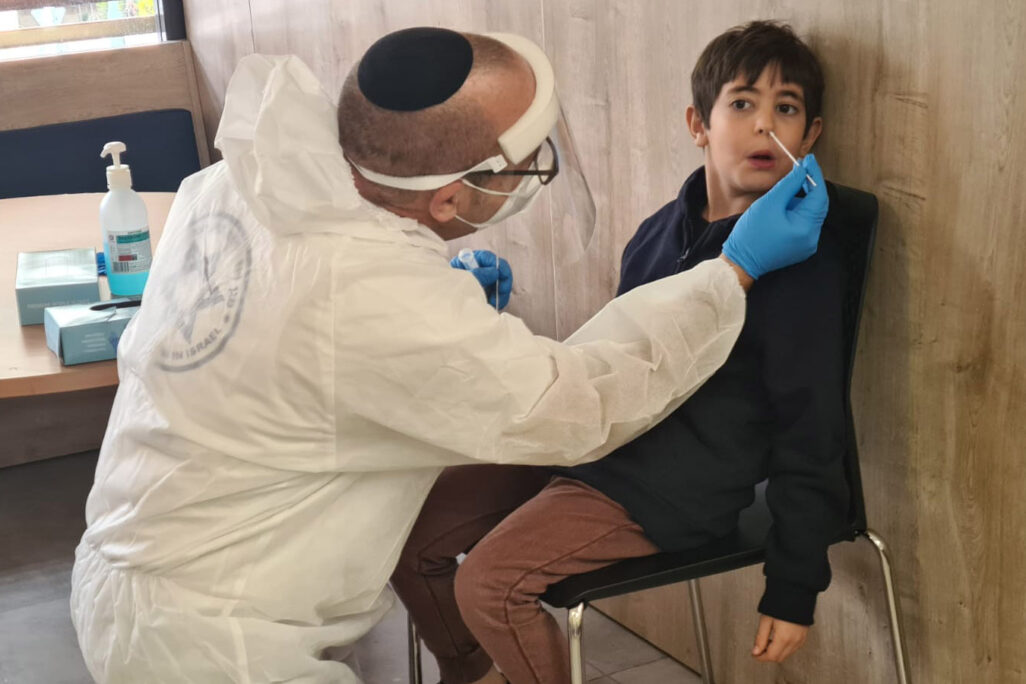
A program for routine coronavirus testing for students and teachers in schools operates in only 70 schools, just one percent of the 5,272 schools in Israel, according to data obtained by Davar. The program “Education Shield”, which is designed to prevent outbreaks in educational institutions and enable in-person learning in cities where infection rates remain high, involves about 21,000 students and teachers, although it is designed to enable a return to normalcy for hundreds of thousands of students.
The program, which involves running tests on “pooled” samples taken from classes of students, came after a year of distance learning for middle school students. While elementary schoolers and older high schoolers have returned to in-person learning during several periods in between national lockdowns, middle schoolers have by and large remained at home.
Virtual learning has had ripple effects on Israel’s economy, as disproportionate numbers of women have dropped out of the workforce to provide childcare at home. The result is a major gender disparity in how the coronavirus has affected unemployment in Israel, with women bearing the brunt of the job losses.
A survey of twenty major cities across the country shows that most of them are not implementing the program. The Acre municipality and the Be'er Sheva municipality told Davar that the program is being considered. Of the twenty cities, only Nof HaGalil and Lod have begun to implement the framework. Nof HaGalil is the only city in the country where the program is running in all schools, so, although as of this week its infection rates were among the highest in the country, students there are still learning in person.
The implementation of the program by the Ministry of Education began with the exit from the third lockdown in February, following a pilot conducted by the Ministry of Defense in November and December with the participation of 50 schools. The program is intended for local authorities that are defined as 'borderline oranges' in Israel’s four-tier traffic light model (cities classified as green and yellow, or orange, have relatively low infection rates and a high immunization rate. Red municipalities are required to shut down their schools).
On Sunday, a government decision went into effect stating that schools where the program operates will not be shut down even if its city classification is changed to red. It will not be possible, however, to start running the program when the locality is red.
To start running the program, an educational institution must get the approval of over 75% of the parents of the students and staff at the institution. It is possible that the fear of quarantine, or of performing tests in schools, is what stops parents from agreeing to the program. In addition, the Ministry of Education last night presented another alternative for continuing studies for 11th-12th grade students – vaccination of 75% or more of students of these age groups in each school will allow learning even when the locality is defined as red. This decision can be an alternative to testing, but is only relevant to older grades which are eligible for vaccination.
The coronavirus tests in the program are performed using the pooling method, a unique method developed by the Ministry of Defense. Two samples are taken from each subject. One is put into a test tube with the samples of all the capsule members, and the other is kept as an individual test.
The pooled test tube is sent to a laboratory, and the result obtained indicates whether one or more of the class members is positive for coronavirus. In the case of a positive result, all the capsule members are sent to quarantine, and only then are the individual tests run to identify who is positive for corona. This saves time at overloaded laboratories and enables rapid virus detection, since it avoids waiting for the test results of all the students.






